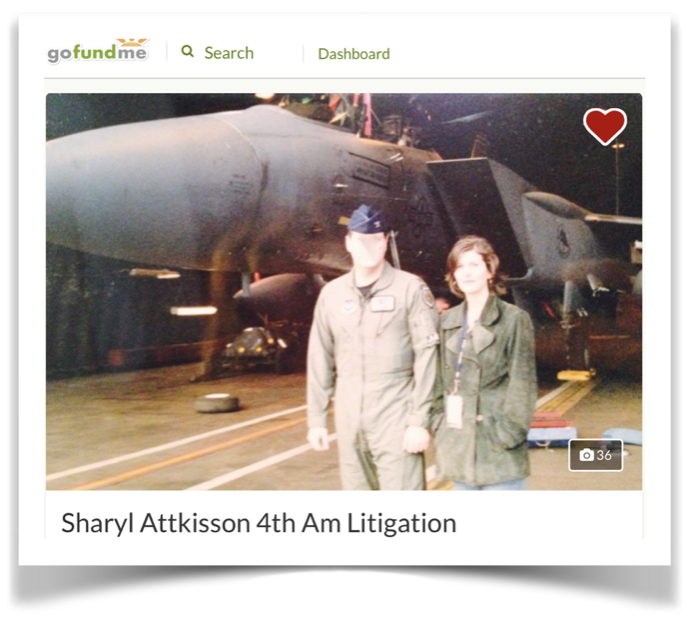
The following is a transcript of an investigative report on Full Measure News. Click on the link at the end of the transcript to watch the video story.
Today’s modern coal plants are not your daddy’s coal plants. And we recently found out about a unique engineering contest being held to make them even cleaner. We’re off to northeast Wyoming near the town of Gillette.
This is Dry Fork Station coal plant near Gillette, Wyoming.
Fueled by a coal mine about a mile away, it’s equipped with new technologies making it one of the cleanest and cheapest of its kind in the U.S.
Sharyl: I noticed there’s no black smoke coming from the smokestack.
Jason Begger: There is not, and the cool thing about it is this is a very new power plant that employs all of the newest technologies from sulfur dioxide scrubbers, mercury controls, ash controls, all those sort of things. So, what you’re seeing coming out of that stack right now is water vapor and about 12.5% CO2.
Jason Begger says the question is what can be done to erase that final 12-and-a-half percent of carbon dioxide or CO2, which is regulated as a pollutant when it’s produced by the industry. Begger is managing director of the state’s Integrated Test Center housed here where researchers can “plug and play.”
Begger: So, the Test Center, what we’ve done is between the stack and this building, you’ll see kind of a large tube, a bluish gray tube that diagonal moves over, we’re diverting about 5% of the power plant’s exhaust gas into a manifold system, which is a network of pipes to allow researchers and technology developers access to that flue gas. It’s the right pressures. It’s the right temperature. It’s real-world conditions that you just cannot model in a laboratory space.
Sharyl: When you say it’s “plug and play,” what do you mean by that?
Jason Begger: So, what we’ve done here is we tap into the power plant, we access that flue gas, which comes into this duct here, and then we have six spots like this where it’s an eight-inch duct where they can bring their technology. They tie into it. They have access to that flue gas.
Sharyl: So, they can get some dirty emissions to experiment with?
Begger: Exactly. It’s exactly what it is.
Engineering teams from around the world were chosen to compete here at this site and another in Canada for the “Carbon XPRIZE.”
XPRIZE video: Today our planet’s atmosphere contains more carbon dioxide than we’ve ever seen in human history.
Fight government overreach and double-standard justice by supporting the Attkisson Fourth Amendment Litigation Fund for Attkisson v. DOJ and FBI for the government computer intrusions. Click here.
The goal is to see who can develop the best practical ideas to use CO2 flue gas.
XPRIZE video: But what if we didn’t have to choose between our economy and our environment? What if we could turn our carbon liability into an asset?
This solar contraption at Dry Fork is a part of the Carbon XPRIZE contest.
Mihir Gada: We call the reactor the highlight reactor.
Mihir Gada, is a process engineer for Dimensional Energy. They’re trying to turn solar energy and carbon dioxide into a marketable product used to make jet fuel.
Gada: This is a solar concentrator, which is focusing the sunlight into a small area so that it gets converted into heat and generates a huge temperature, which we can use as a reaction medium to convert carbon dioxide into a useful product. What we are producing is called “syngas,” which is an intermediate for the Fuels Industry. So syngas can be converted into liquid fuels.
Steps away, these cinder blocks are also part of the Carbon XPRIZE contest. CO2 is actually used in the concrete. UCLA Project Scientist Iman Mehdipour is part of the CarbonBuilt team.
Iman Mehdipour: So, if we can cut the cement content to produce construction materials and use the waste flue gas to produce concrete materials. I think that would be a good saving or good mitigation of the CO2 emission in the world.
Begger: The industry has done a really great job of engineering solutions for sulfur dioxide, nitrous oxides, mercury, ash, those types of things. And so, we see sort of the last hurdle is carbon capture, carbon controls. And so, can we engineer a technology solution like we’ve done for all of those other pollutants to one day get to a power plant that the only thing they’re emitting is water vapor.
XPRIZE video: Imagine a world where everything around you is made from carbon emissions. From the products you use every day, to the clothes you wear, to the roads you drive on, to the buildings you live in.
Begger: If you can sell cinder blocks or chemical feed stocks or carbon fiber or all of those things, hand sanitizer, vodka, if there’s an economic profit driver behind that, then it’s probably going to happen a lot sooner.
Sharyl (on-camera): Two winners of the XPRIZE will be announced later this year and split a $15 million cash prize.
Click on the link below to watch the video report on FullMeasure.news:
http://fullmeasure.news/news/shows/cleaning-coal










